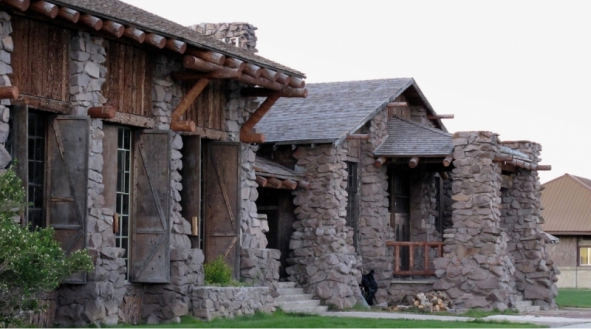Its Unique Geology
The commanding features that initially attracted interest, and led to the preservation of Yellowstone as a national park, were geological: the geothermal phenomena (there are more geysers and hot springs here than in the rest of the world combined), the colorful Grand Canyon of the Yellowstone River, fossil forests, and the size and elevation of Yellowstone Lake.
Historic Cultural Sites
The human history of the park is evidenced by cultural sites dating back 12,000 years. More recent history can be seen in the historic structures and sites that represent the various periods of park administration and visitor facilities development.
Protecting for Future Generations to Enjoy
99% of the park's 3,400 square miles (2.2 million acres) remains undeveloped, providing a wide range of habitat types that support one of the continent's largest and most varied large mammal populations. Yellowstone is a true wilderness, one of the few large, natural areas remaining in the lower 48 states of the United States. Here, you meet nature on its own terms. Park regulations exist for your safety and for the protection of natural and cultural resources. Please obey all park rules and regulations.
The Congressional Act creating Yellowstone National Park:
Forty-Second Congress. Session II Ch. 21-24. 1872. March 1, 1872. CHAP. XXIV.-- An Act to set apart a certain Tract of Land lying near the Head-waters of the Yellowstone River as a public Park.
Be it enacted by the Senate and House of Representatives of the United States of America in Congress assembled, That the tract of land in the Territories of Montana and Wyoming, lying near the head-waters of the Yellowstone river, and described as follows, to wit, commencing at the junction of Gardiner's river with the Yellowstone river, and running east to the meridian passing ten miles to the eastward of the most eastern point of Yellowstone lake; thence south along said meridian to the parallel of latitude passing ten miles south of the most southern point of Yellowstone lake; thence west along said parallel to the meridian passing fifteen miles west of the most western point of Madison lake; thence north along said meridian to the latitude of the junction of the Yellowstone and Gardiner's rivers; thence east to the place of beginning, is hereby reserved and withdrawn from settlement, occupancy, or sale under the laws of the United States, and dedicated and set apart as a public park or pleasuring-ground for the benefit and enjoyment of the people; and all persons who shall locate or settle upon or occupy the same, or any part thereof, except as hereinafter provided, shall be considered trespassers and removed therefrom.
SECTION 2. That said public park shall be under the exclusive control of the Secretary of the Interior, whose duty it shall be, as soon as practicable, to make and publish such rules and regulations as he may deem necessary or proper for the care and management of the same. Such regulations shall provide for the preservation, from injury or spoliation, of all timber, mineral deposits, natural curiosities, or wonders within said park, and their retention in their natural conditions. The secretary may in his discreation, grant leases for building purposes for terms not exceeding ten years, of small parcels or ground; at such places in said park as shall require the erection of buildings for the accommodation of visitors; all of the proceeds of said leases, and all other revenues that may be derived from any source connected with said park, to be expended under his direction in the management of the same, and the construction of roads and bridle-paths therein. He shall provide against the wanton destruction of the fish and game found within said park, and against their capture or destruction for the purposes of merchandise or profit. He shall also cause all persons trespassing upon the same after the passage of this act to be removed therefrom, and generally shall be authorized to take all such measures as shall be necessary or proper to fully carry out the objects and purposes of this act.
APPROVED, March 1, 1872.



